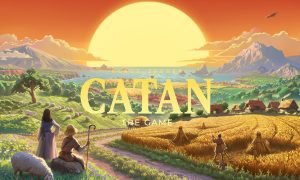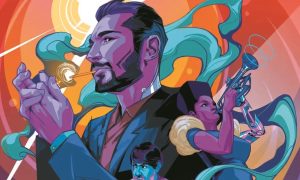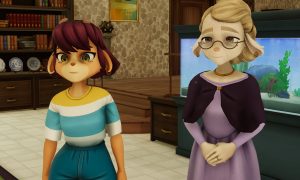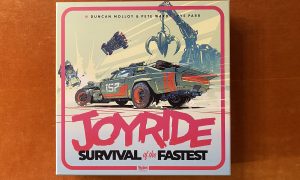“Space… The final frontier…
These are the voyages of the Starship Enterprise.
Its continuing mission:
To explore strange new worlds…
To seek out new life; new civilizations…
To boldly go where no one has gone before!”
This phrase, or something similar to it, has resonated in the minds of millions and millions of Star Trek fans for over forty years. Spanning five television shows (six, if you count the cartoon) and eleven movies, Star Trek is one of the true juggernauts of the science-fiction genre, next to Star Wars.
Star Wars had already gotten the MMO treatment a number of years back, and when everyone heard that Cryptic Studios was taking over Star Trek Online from Perpetual Studios, there were mixed reactions. Many of us remembered Star Wars Galaxies years before, and were worried about Star Trek getting similar treatment. Also, while Cryptic was made up of a number of the City of Heroes team, there were also some unsettling noises about their other MMO, Champions Online.
From the moment you start the game, it’s fairly easy to tell that Cryptic’s goal is to stay as close as possible to the spirit of Star Trek. Even the opening music, while not being exactly the same as any show or movie, starts out the same and branches into similar music. Character generation is fairly deep, offering the ability to create up to four characters (at first), with most of the standard Star Trek races available. Notable exceptions are the Klingons and Ferengi (which must be purchased), Joined Trill (part of the Deluxe Edition only) and Liberated Human Borg (from the Lifetime Subscription). To begin, you can only be part of the Federation, but once you reach level 6, you unlock the ability to play as a member of the Klingon Empire, which adds another 4 species to the total possible. Also, you can choose to create an alien with your own traits and appearance.
Taking notes from previous MMOs, notably Champions Online and City of Heroes, the customization available to your characters is fairly deep, not only on the character’s body and facial features, but also on your character’s uniforms, although more are added through bonus packages and the like, as well.
Once you’ve created your character and have completed chargen, you get a brief rundown on what has gone before. Essentially, the peace that the Federation had had for years has shattered, with the United Federation of Planets at war with the Klingon Empire, Romulan Star Empire, rebel remnants of the Cardassians, and the Borg themselves.
Upon entering the game, you’re immediately placed into a fight with the Borg, where you’re sent through a tutorial which introduces you to ground combat, then to ship combat as apparently every other officer on your ship has been killed, leaving you (as an Ensign), the ranking officer.
Ground combat is very similar to pretty much any other MMO, down to the controls. There are a few wrinkles, though, namely flanking damage. If you and another person attack a target from different angles, the one attacking from the side or behind will do more damage. Of course, if you’re being attacked from behind the same is true and you can get chewed up fairly quickly.
An interesting addition to ground-based combat is that when you go on an Away Team mission, you can take up to four additional NPCs with you, consisting of either your bridge officers or security team (go Red Shirt Squadron!).
Once you’re in space, controls are quite a bit different. You can use standard WASD with a few additions, or (and what I’ve found to be the most convenient), you can use your mouse while holding both buttons down. If you move your mouse at that point, it shifts the ship in the same direction. Turns are not automatic and immediate, of course, and are depend on the speed of your ship. Another interesting point related to ship combat is that it’s all about tactics and strategy. You can’t just run up to an enemy ship and blow all of your weapons repeatedly while sitting in one spot. You have to move around, adjusting power between your shields and weapons as needed, adjusting speed, turning to bring your weapons into their respective firing arcs while trying to avoid your enemy’s arc as well. It’s very engaging and it can be extremely nerve-wracking to try to polish off an enemy while your shields are dying, the red alert klaxon is blaring and you can visibly see parts of your ship burning from the damage you’ve sustained.
Graphically, the game is very pretty, especially if you have a solid system and video card. Ships and items in space or on planets have a lot of detail and you can even see differences in various uniforms quite clearly. There is a slight issue (at least on my machine) with graphical popup when you talk to someone ‘on-screen’, as it were, as the game draws the base facial structure, then about a second or two later adds the facial features and uniform. It’s a minor annoyance, but really nothing more than that. Otherwise, the level of detail is so polished that you can even see your ship’s registry number on the bottom of the saucer section.
Leveling in STO is a bit different than other games. You begin as an Ensign during the tutorial mode, then are promoted to Lieutenant. You then go through ten levels as a Lt., then are promoted to Lieutenant Commander. Ten more levels, and you’re a Commander, then ten more to become a Captain. Once you’ve gotten ten more levels at that point, you can become an Admiral for the final (at this time) five levels. This means that technically you have 45 levels in the game, although the game is less level based and more rank based.
Every time that you are promoted, you gain the ability to promote your bridge officers as well as gain new skill trees and ship types. You can customize your ships, however, from various parts. This allows players to create a ship that is unique to how they want it to look and gives the player a much larger feeling of ownership, which is definitely a plus.
While Cryptic has kept the game close to how Star Trek has always been seen, there have been a number of changes which have been implemented to make the MMO work. The majority of these are in looting, economy and crafting. While you can loot normal items through ground combat, such as weapons, food, tribbles (don’t keep them with your food, of course), and various supplies, the majority of your loot found in space is going to consist of ship’s consoles and items for the ship itself.
Unlike any of the TV shows or movies, you don’t go back to a Starbase to repair or upgrade your ship’s capabilities. Perhaps because it’s wartime, or perhaps because it was simply easiest to implement, you have the ability to hot-swap ship components at any time to choose the option that best fits your style of play while making your ship as formidible as possible.
For years, we’ve known that there is no money in Star Trek. This holds true in Star Trek online, although there is a currency of sorts: Energy Credits. These can be gained by doing quests only, and are used for purchasing ship upgrades, components, or buying from the replicator. You can also sell excess items for them as well, as persumably what you sell is broken down to core components and used to make other items.
Crafting is more or less ignored in Star Trek. During the course of the game, you will be able to scan various anomalies both in space and on planets or stations. Scanning these will yield various samples which can be turned in at Memory Alpha to upgrade items you already have. This is essentially the extent of the crafting in the game.
As with many MMOs, quests are the core component of gameplay, with the Federation consisting primarily of PVE content while the Klingon Empire is set up more for PVP. To say that there are a large number of quests would be putting it mildly. The issue comes when the quests are very similar in nature, especially early on. While this is true in most MMOs, in STO they seem to break down into four distinct styles: 1) Go to a Sector and find Klingons, then destroy three instances. 2) Go to a Sector and investigate three systems, doing whatever is required (which are usually the next two options), 3) Go to a System and fight on a planet or space station. 4) Go to a System and fight something in space.
While what or who you fight changes periodically between the Klingons, Gorn and others, it’s still essentially the same concept. While it’s somewhat to be expected given the story in the game, most of us have grown up seeing exploration, diplomacy and various other things as well as combat. While there’s an early diplomacy mission, and the ability to explore systems created on the fly by the game’s Genesis Engine, the large sum of the game is definitely designed around combat. What this does is make the game feel very bland and shallow; this is surprising give the game’s rich universe as well as Cryptic’s obvious love for fan service (you’ll meet Hikaru Sulu’s grandson, Chief O’Brien’s son, visit DS9 and see many other things from the various series. The just-released Chapter One even brings in Q.
The fan service continues with the audio, using a Majel Roddenberry sound-alike for the ship’s computer system, as well as tutorials and other in-game speech voiced by a pair of Spocks: Zachary Quinto and Leonard Nemoy. The music is very Star Trek-like, and most of the weapon sounds, the klaxons, transporters and other ship sounds are authentic and accurate.
Don’t get me wrong, there’s a ton of things to do in the game, there’s just not much depth to it at this stage of things. While it’s not a great sign for a MMO to be lacking content at launch (or even a couple of months after), it isn’t a death knell as even World of Warcraft was missing much of the end-game at launch. If Cryptic continues to polish the game and add content, we could be playing Star Trek Online for as long as Paramount continues to make movies.
Ron Burke is the Editor in Chief for Gaming Trend. Currently living in Fort Worth, Texas, Ron is an old-school gamer who enjoys CRPGs, action/adventure, platformers, music games, and has recently gotten into tabletop gaming.
Ron is also a fourth degree black belt, with a Master's rank in Matsumura Seito Shōrin-ryū, Moo Duk Kwan Tang Soo Do, Universal Tang Soo Do Alliance, and International Tang Soo Do Federation. He also holds ranks in several other styles in his search to be a well-rounded fighter.
Ron has been married to Gaming Trend Editor, Laura Burke, for 28 years. They have three dogs - Pazuzu (Irish Terrier), Atë, and Calliope (both Australian Kelpie/Pit Bull mixes), and an Axolotl named Dagon!

See below for our list of partners and affiliates:
























